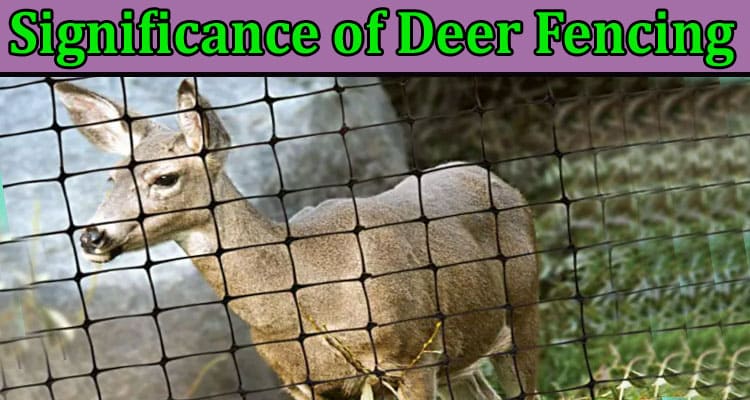In the delicate balance between human habitation and the natural world, deer fences emerge as a pivotal solution to mitigate conflicts and protect our surroundings. The importance of deer fencing extends beyond property boundaries; it plays a vital role in preserving landscapes and securing crops against the relentless foraging habits of these graceful but disruptive creatures. This article delves into the critical role that deer fences play in safeguarding our outdoor spaces and ensuring the coexistence of humans and wildlife.
The Challenge of Deer and Landscape Protection
Deer, with their innate beauty and gentle demeanour, often capture our admiration. However, their browsing habits can wreak havoc on landscapes and agricultural areas, leading to financial losses and compromised aesthetics. The challenge lies in finding a balance between appreciating the presence of these animals while preventing them from causing irreparable damage.
Preserving Your Landscape
Landscape design is an art, an expression of personal creativity that transforms outdoor spaces into living canvases. Whether you’ve meticulously cultivated a garden or nurtured a sprawling lawn, the time, effort, and emotional investment you’ve poured into your landscape deserve protection. Deer, if left unchecked, can strip plants of leaves, flowers, and foliage, rendering your artistic creation a mere shadow of its former self.
Securing Your Crops and Agriculture
For farmers and agriculturalists, the importance of deer fencing transcends aesthetics—it’s a matter of livelihood. Deer foraging can lead to significant crop losses, impacting food production and economic stability. In an era where global food security is a pressing concern, the protection of crops against wildlife intrusion takes on even greater significance.
The Role of Deer Fences in Mitigating Conflicts
Deer fencing acts as a bridge between the desires of humans and the needs of wildlife. It’s not about eliminating deer from their natural habitats, but about creating boundaries that respect both human spaces and animal habitats. By implementing effective deer fencing solutions, we can mitigate conflicts that arise from deer-human interactions.
Advantages of Deer Fences
Crop Protection: Deer fencing creates a physical barrier that prevents deer from accessing crops, ensuring agricultural productivity.
Landscape Preservation: With deer fences, your landscape investments remain intact, showcasing the beauty you’ve meticulously nurtured.
Wildlife Conservation: By preventing deer from accessing areas that can lead to conflicts, you contribute to the conservation of local ecosystems.
Reduced Human-Wildlife Conflicts: Deer fences help minimize instances of deer entering urban or residential spaces, reducing potential conflicts.
Economic Stability: For farmers, deer fences translate to minimized crop losses and sustained agricultural production.
Investing in Coexistence
Deer fencing isn’t just about physical boundaries; it’s a testament to our commitment to coexisting with wildlife while preserving our surroundings. It’s a reminder that the choices we make can harmonize with the natural world without compromising the needs of either party.
Conclusion
The importance of deer fencing stretches far beyond property lines and agricultural fields. It embodies a broader narrative of coexistence, respect, and sustainable stewardship of both our landscapes and the creatures that inhabit them. By acknowledging the significance of deer fences in protecting landscapes, securing crops, and minimizing conflicts, we’re taking strides toward a future where harmony between humans and wildlife is not just an aspiration, but a tangible reality.

